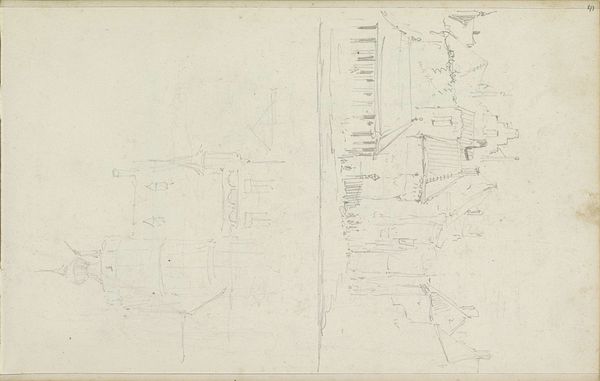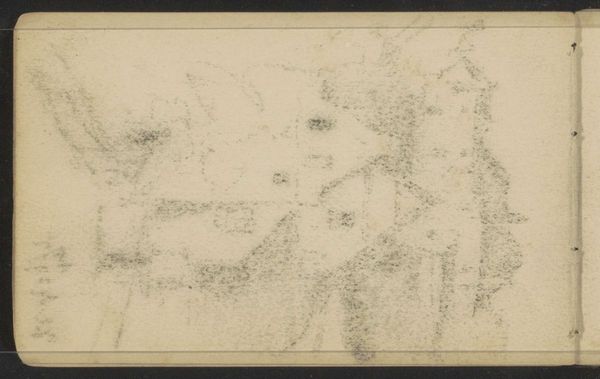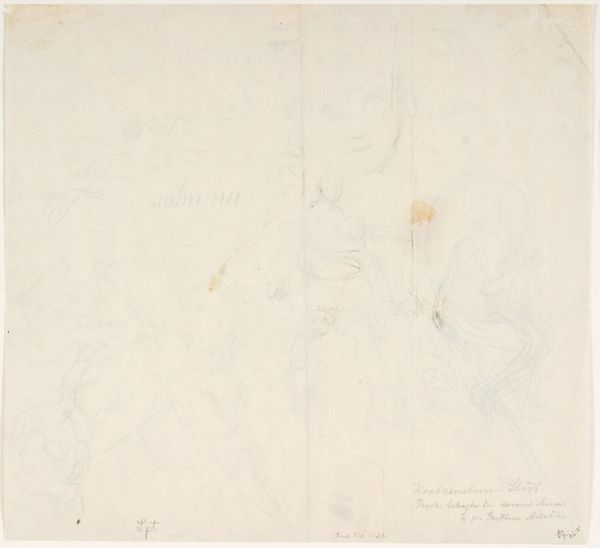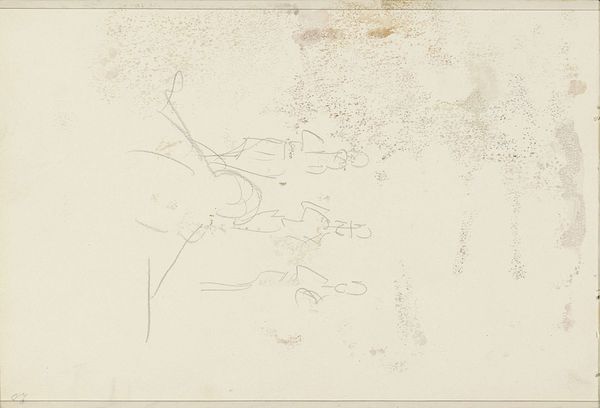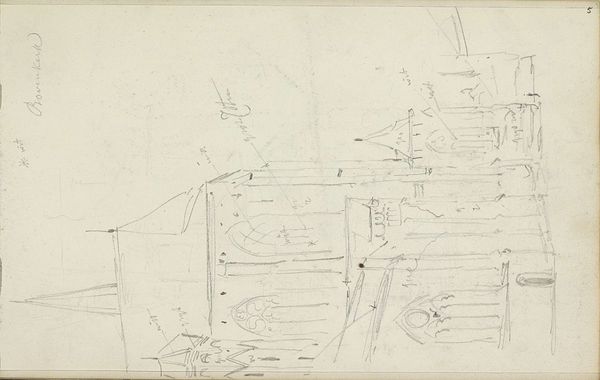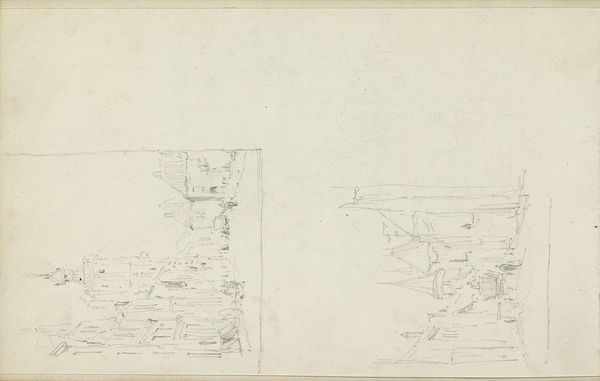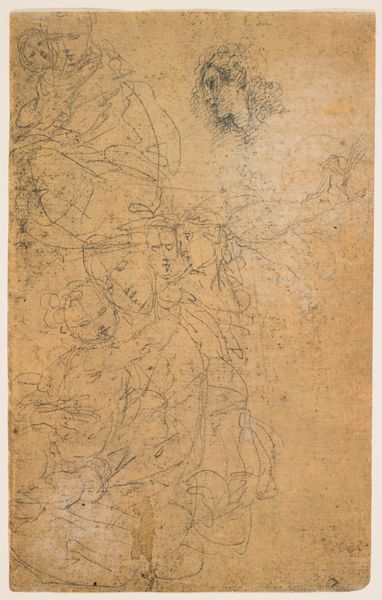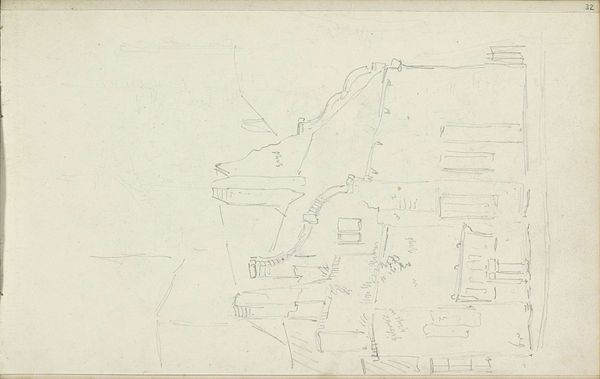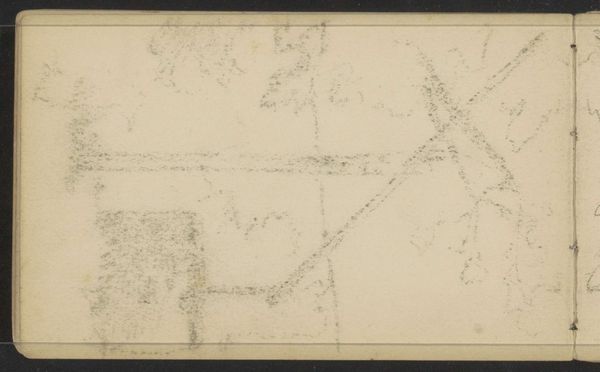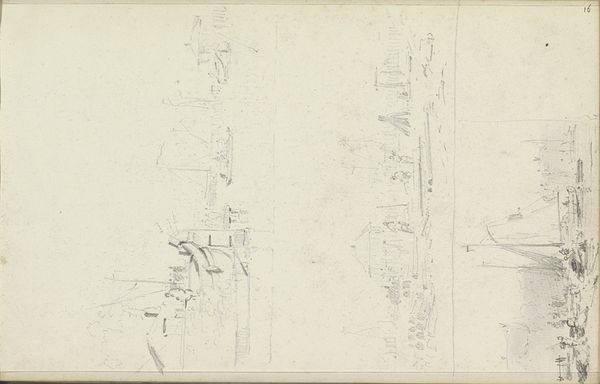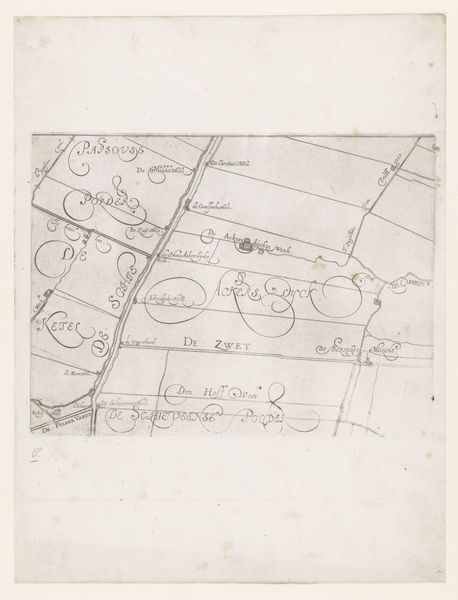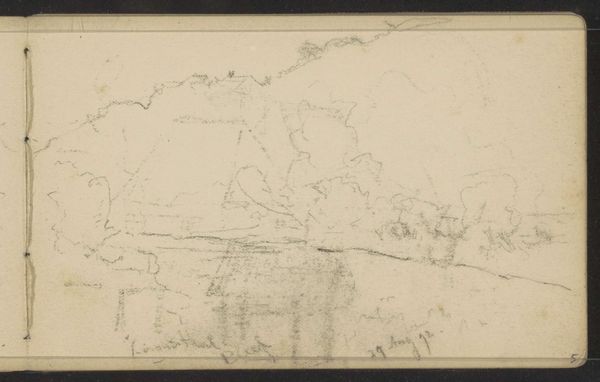
drawing, paper, pencil
#
drawing
#
dutch-golden-age
#
paper
#
11_renaissance
#
pencil
Dimensions: height 260 mm, width 258 mm
Copyright: Rijks Museum: Open Domain
Curator: Let's consider Gesina ter Borch’s “Sketch of a Knife and Other Scribbles,” likely dating between 1659 and 1661. This Dutch Golden Age drawing, rendered in pencil on paper, currently resides here at the Rijksmuseum. What is your immediate impression? Editor: Chaotic. Yet, there's something grounding in the stark simplicity. The fragmented lines and almost obscured objects evoke a sense of unfinished stories, suppressed emotions, perhaps? Curator: I see it more as a fascinating document of a woman's creative process in the 17th century. Ter Borch's positionality as a woman artist within a male-dominated art world inevitably shapes how we interpret even seemingly simple sketches. What does it mean to sketch a knife during that era? Is it about domesticity, or perhaps something sharper, a sign of resistance against societal limitations? Editor: Perhaps the knife and the "scribbles" function almost like coded messages. Knives are rarely just knives. Throughout history, they've been symbols of protection, aggression, sometimes even sacrifice. Combined with the illegible nature of the rest, it feels laden with meaning. Curator: The grid lines beneath these marks also offer an interesting frame for analysis. Are they mere structural elements, or do they represent the limitations—the grid—of a woman's expected role? Editor: Intriguing thought! The visible under-drawing highlights the effort beneath any apparent surface. Those tentative lines—are those the artist’s hidden feelings struggling to emerge? Also, "Copie," it seems to label part of the sheet. Was she replicating something? Curator: Good eye. Considering she comes from a family of artists, was she practising techniques and learning through imitation? If so, we should delve more into her artistic lineage and upbringing to discover whether these practices subvert or uphold artistic norms. Editor: Ultimately, the symbolism within "Sketch of a Knife and Other Scribbles," for me, highlights both visible tradition and an invitation to speculate what exists beneath, between, and within its symbols. Curator: This brief, unfinished glimpse into Ter Borch’s process forces us to acknowledge not just the artist, but also ourselves as interpreters and social agents. Editor: Precisely, bringing historical memory into current understandings. Thanks for that exchange.
Comments
No comments
Be the first to comment and join the conversation on the ultimate creative platform.
